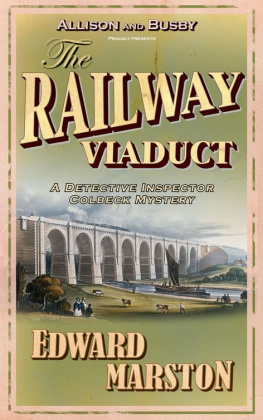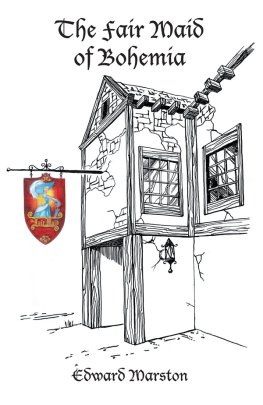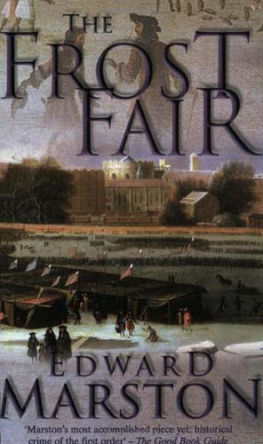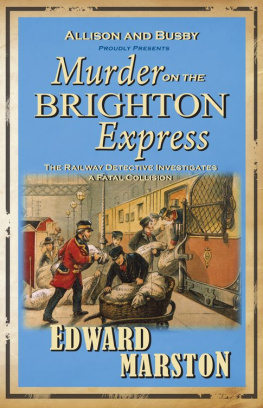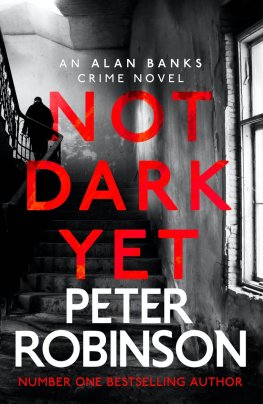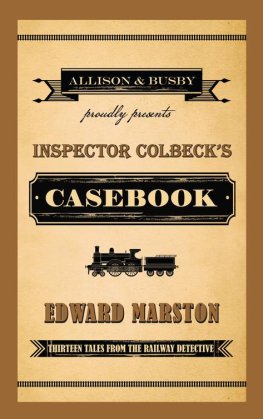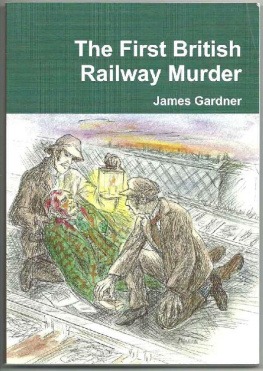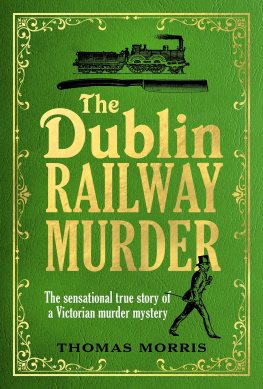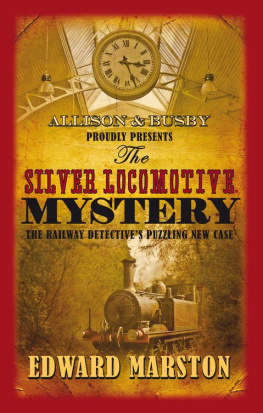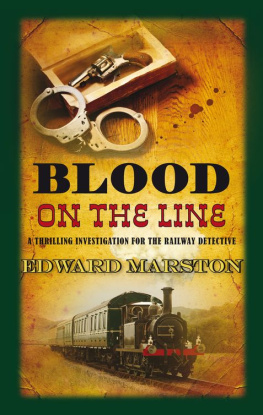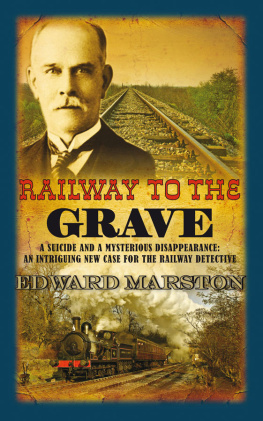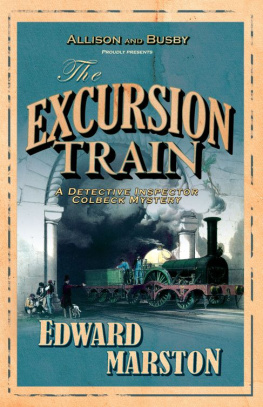E DWARD M ARSTON was born and brought up in South Wales. A full-time writer for over thirty years, he has worked in radio, film, television and the theatre, and is a former Chairman of the Crime Writers Association. Prolific and highly successful, he is equally at home writing childrens books or literary criticism, plays or biographies.
1852
Something was missing. His preliminary sketch of the Sankey Viaduct was both dramatic and satisfyingly precise, but it needed something to anchor it, a human dimension to give a sense of scale. He knew exactly where to place the figures, and he could easily have pencilled them in, but he preferred to rely on chance rather than imagination. Ambrose Hooper had been an artist for over forty years and his continued success could not simply be attributed to his sharp eye and gifted hand. In all that he did, luck played a decisive part. It was uncanny. Whenever he needed to add a crucial element to a painting, he did not have to wait long for inspiration to come. An idea somehow presented itself before him.
Hooper was a short, slim, angular man in his sixties with a full beard and long grey hair that fell like a waterfall from beneath his battered old straw hat. On a hot summers day, he had taken off his crumpled white jacket so that he could work at his easel in his shirtsleeves. He wore tiny spectacles and narrowed his lids to peer through them. An experienced landscape artist, it was the first time that he had turned his attention to the massive railway system that had changed the face of the English countryside so radically over the previous twenty years. It was a challenge for him.
Viewed from below, the Sankey Viaduct was truly imposing. It had been opened in 1830 as part of the Liverpool and Manchester Railway and was roughly halfway between the two places. Straddling a valley that contained both a canal and a brook, the viaduct was supported by nine identical arches, each with a span of fifty feet. Massive piers rose up with perpendicular certitude from the piles that had been driven deep down into the waterbeds, and the parapet coping reached a height of almost seventy feet, leaving ample room to spare for the tallest vessels that sailed on the canal. It was a predominantly brick structure, finished off with dressings and facings that gave it an added lustre. In the bright sunshine, it was a dazzling piece of architectural masonry.
Hoopers sketch had caught its towering simplicity. His main objective, however, was to show the stark contrast between the valley itself with its verdant meadows and the man-made intrusions of canal and viaduct. A few cattle grazed obligingly on his side of the waterway and Hooper was able to incorporate them in his drawing, timeless symbols of rural life in the shadow of industry. What he required now were human figures and as ever, his luck held out they not only appeared magically before him, they stood more or less in the spot where he wanted them to be.
Two women and a small boy had come to look up at the viaduct. From the way that she held the boys hand, Hooper decided that the younger woman must be his mother and his guess was that the other woman, older and more fastidious, was her spinster sister, less than happy at being there. She was wearing too much clothing for such a hot day and was troubled by insects that flew in under her poke bonnet. While the boy and his mother seemed quietly excited, the other woman lifted the hem of her dress well above the ground so that it would not trail in any of the cowpats. The visit was clearly for the boys benefit and not for that of his maiden aunt.
As he put them into his sketch with deft flicks of his pencil, Ambrose Hooper gave each of them a name to lend some character. The mother was Hester Lewthwaite, the wife of a provincial banker perhaps; her son, eight or nine years of age at most, was Anthony Lewthwaite; and the disagreeable third person was Petronella Snark, disappointed in love, highly critical of her sister and not at all inclined to indulge a small boy if it entailed trudging across a meadow in the stifling heat. Both women wore steel-ringed crinolines but, while Hesters was fashionable, brightly coloured and had a pretty flounced skirt, Petronellas dress was dark and dowdy.
He knew why they were there. When he took his watch from the pocket of his waistcoat, Hooper saw that a train was due to cross the viaduct at any moment. It was something he had always planned to use in his painting. A railway viaduct would not suffice. Only a locomotive could bring it to life and display its true purpose. Gazing up, the artist had his pencil ready. Out of the corner of his eye, he then caught sight of another element that had perforce to be included. A sailing barge was gliding serenely along the canal towards the viaduct with three men aboard. Before attempting to sketch the vessel, however, Hooper elected to wait until the train had passed. It was usually on time.
Seconds later, he heard it coming. Mother and child looked up with anticipatory delight. The other woman did not. The men on the barge raised their eyes as well but nobody watched with the same intensity as Ambrose Hooper. Just when he wanted it, the locomotive came into sight, an iron monster, belching clouds of steam and filling the whole valley with its thunder. Behind it came an endless string of gleaming carriages, rattling noisily across the viaduct high above the spectators. And then, to their amazement, they all saw something that they could not possibly have expected.
The body of a man hurtled over the edge of the viaduct and fell swiftly through the air until it landed in the canal, hitting the water with such irresistible force that it splashed both banks. The mother put protective arms around her son, the other woman staggered back in horror, the three men in the barge exchanged looks of utter disbelief. It had been an astonishing sight but the cows accorded it no more than a cursory glance before returning to the more important business of chewing the cud. Hooper was exhilarated. Intending to portray the headlong dash of the train, he had been blessed with another stroke of good fortune. He had witnessed something that no artist could ever invent.
As a result, his painting would now celebrate a murder.
After a couple of tedious hours in court, Detective Inspector Robert Colbeck was glad to return to Scotland Yard so that he could write a full report on the case, and clear up some of the paperwork cluttering his desk. He got no further than his office door. Superintendent Tallis loomed into view at the end of the corridor and beckoned him with an imperious crook of a tobacco-stained finger. When they went into the superintendents office, Colbeck could smell the pungent smoke still hanging in the air. It was a telltale sign that a serious crime had been committed. His superiors response to any crisis was to reach for his cigar box. Tallis waved a piece of paper at him.
This message came by electric telegraph, he said.
From where?
Liverpool. Thats where the body was taken.
Another murder? asked Colbeck with interest.
Another railway murder. Its the reason Im sending you.
The inspector was not surprised. After his success in capturing the gang responsible for the daring robbery of a mail train, the press had dubbed him unanimously as the Railway Detective and he had lived up to the name subsequently. It gave him a kudos he enjoyed, a popularity that Tallis resented and a burden of expectation that could feel very heavy at times. Robert Colbeck was tall, lean, conventionally handsome and dressed as usual in an immaculate black frock coat, well-cut fawn trousers and an Ascot cravat. Still in his thirties, he had risen swiftly in the Detective Department, acquiring a reputation for intelligence, efficiency and single-mindedness that few could emulate. His promotion had been a source of great pride to his friends and a constant irritation to his detractors, such as the superintendent.

